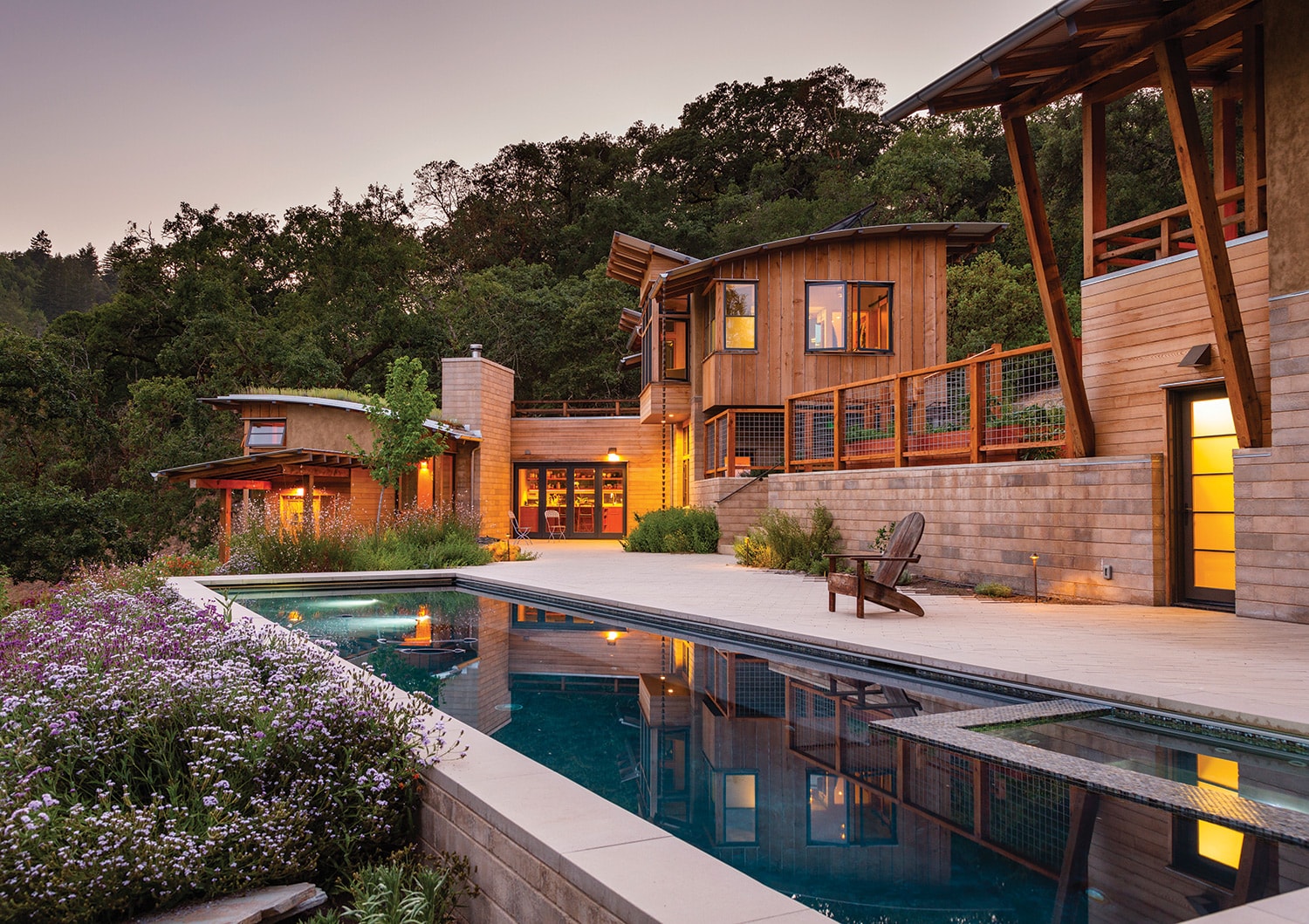
09 May Rendering: Connectivity and Delight
Some passions are born young; others are grown into.
When he was in the eighth grade, David Arkin’s parents gave him a book on passive solar energy by Ed Mazria, the famed architect who, in 2006, founded the think tank Architecture 2030, which studies and advocates for zero greenhouse gas emissions in design and building. Arkin went on to spend his teenage summers as a camp counselor, living in a tent and hiking through the wild. And this early love of nature has echoed through his work.
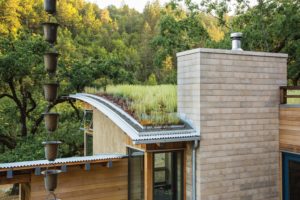
The living roof of the dining and living rooms adds to views from the bedrooms and blends with the foliage.
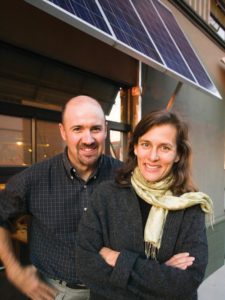
David Arkin and Anni Tilt.
Anni Tilt grew up with ecology-minded parents, living and traveling in a number of countries, where she was influenced by the variety of solutions with which different cultures responded to the same architectural questions. She, too, was pulled by nature and by a desire to design responsibly and sustainably.
Following work, travel and graduate school, Arkin and Tilt were introduced by friends, and, of course, fell in love. Twenty years ago, Arkin Tilt Architects was born. The firm was early to the green building movement — Tilt laughs that a passive design course she took at Berkeley had only three students — but from the beginning, their fundamental principle was to wed sustainability with aesthetics. Being green doesn’t mean forgoing innovative, beautiful design.
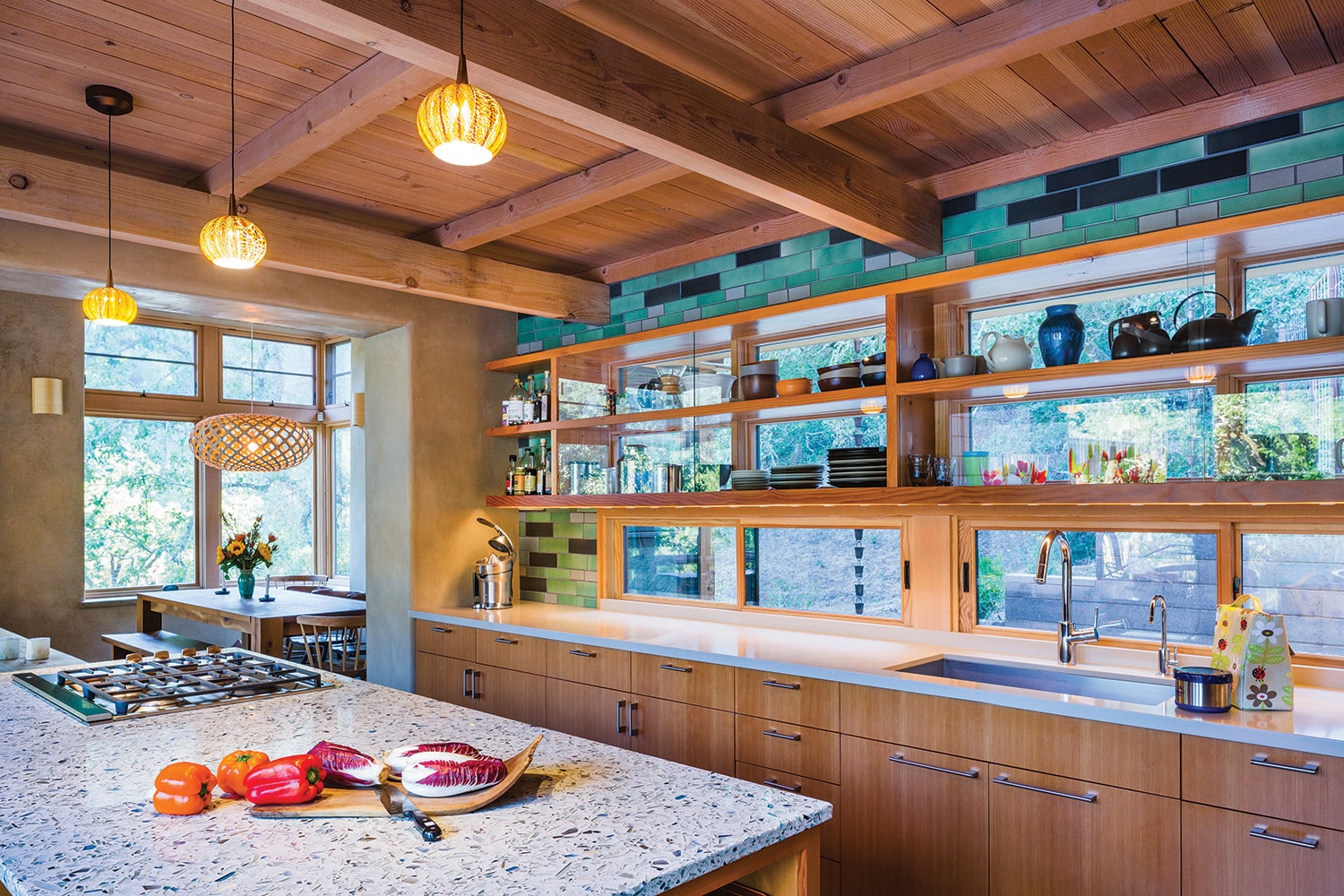 The kitchen, with its rooftop terrace, connects the east and west volumes. The island countertop is made of Vetrazzo recycled glass.
The kitchen, with its rooftop terrace, connects the east and west volumes. The island countertop is made of Vetrazzo recycled glass.
“We founded our firm when green building was just emerging. But we decided to wear it on our sleeves,” says Arkin, who is also the current director of the California Straw Building Association.
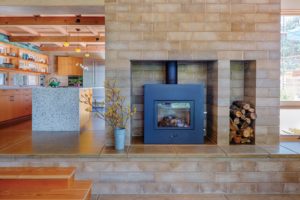
The wood-burning fireplace is surrounded in watershed block, a compressed earth masonry. Photos: Edward Caldwell
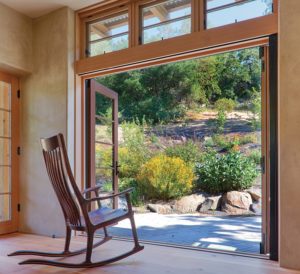
La Cantina bi-fold doors connect this straw-bale studio space to the garden and orchard.
“We’re interested in the intersection between sustainable and aesthetic design,” Tilt explains. “Not just as a technical exercise. It’s something that needs to inspire and connect people to each other and the natural world.”
“Delight” and “connectivity” are words they use to describe their mission. But talk to them and you’ll be swept up in their passion for passive solar design, from the basics of choosing the best site to employ the sun’s trajectory to the use of carbon-neutral building elements, including straw bale, rammed earth, salvaged wood, watershed block and other sustainable materials. All along, they’ve been scouring salvage yards for items not commonly thought of as architectural elements. For example, they sheathed the outside walls of an early design in part with used license plates. They also buy materials, such as off-cut wood, that might otherwise end up in a landfill, but are, in fact, startlingly beautiful.
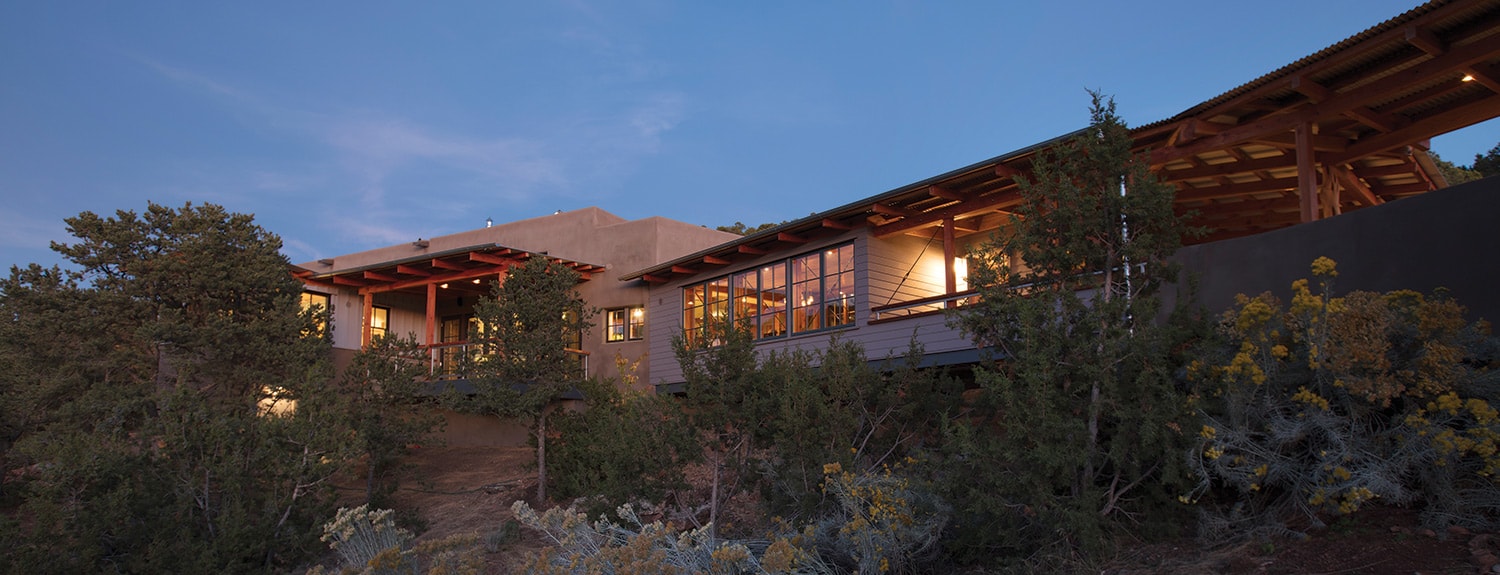 The Canyon Road Bridge House occupies a hillside with stunning views of the city of Santa Fe. The home was built by Prull Custom Builders.
The Canyon Road Bridge House occupies a hillside with stunning views of the city of Santa Fe. The home was built by Prull Custom Builders.
Building green isn’t going to save anyone a substantial amount on construction, as economical as straw bale or rammed earth might sound. The reward comes with the dramatic reduction in energy usage, emissions and wear on the planet. And carbons emitted during construction are balanced by the natural materials. “We want people to know these are viable technologies,” Arkin says.
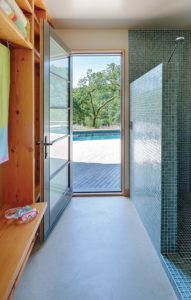
The glass-tiled shower and fir storage shelves of the master bath open to the pool area. Photos: Edward Caldwell
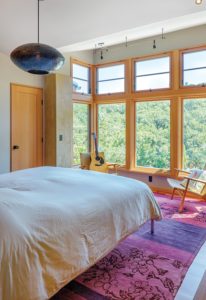
The master bedroom windows open to sweeping views, allowing in low winter sun for passive solar heat gain.
The firm presents new clients with a detailed questionnaire to get to the root of their lives, their functional needs and dreams. One of the questions, Arkin says with a laugh, is “What’s your funk tolerance level?” But for all the use of natural materials, the firm’s designs are effortlessly elegant.
In California, their Watershed Straw Bale Residence operates almost completely off the grid, powered by photovoltaic panels. The site was one of numerous possibilities on the 170-acre property. It won for its year-round sunlight, with a line of trees to the west to shield the house from fierce afternoon summer sun. The site was also accessible, cutting back on construction emissions.
The design is a series of volumes that flow east-west, and a prodigious use of windows connects the interiors to the beautiful natural surroundings. In the winter, low southern sun floods the house, creating warmth that’s absorbed and radiated throughout the night by green materials, from watershed blocks to rammed earth and straw bale walls. The passive solar design is enhanced by curved roofs and overhangs that, along with thick walls, keep the house cool in summer. Much of the wood was milled on-site, and some wonderful live-edge slabs form balusters for the interior stairway.
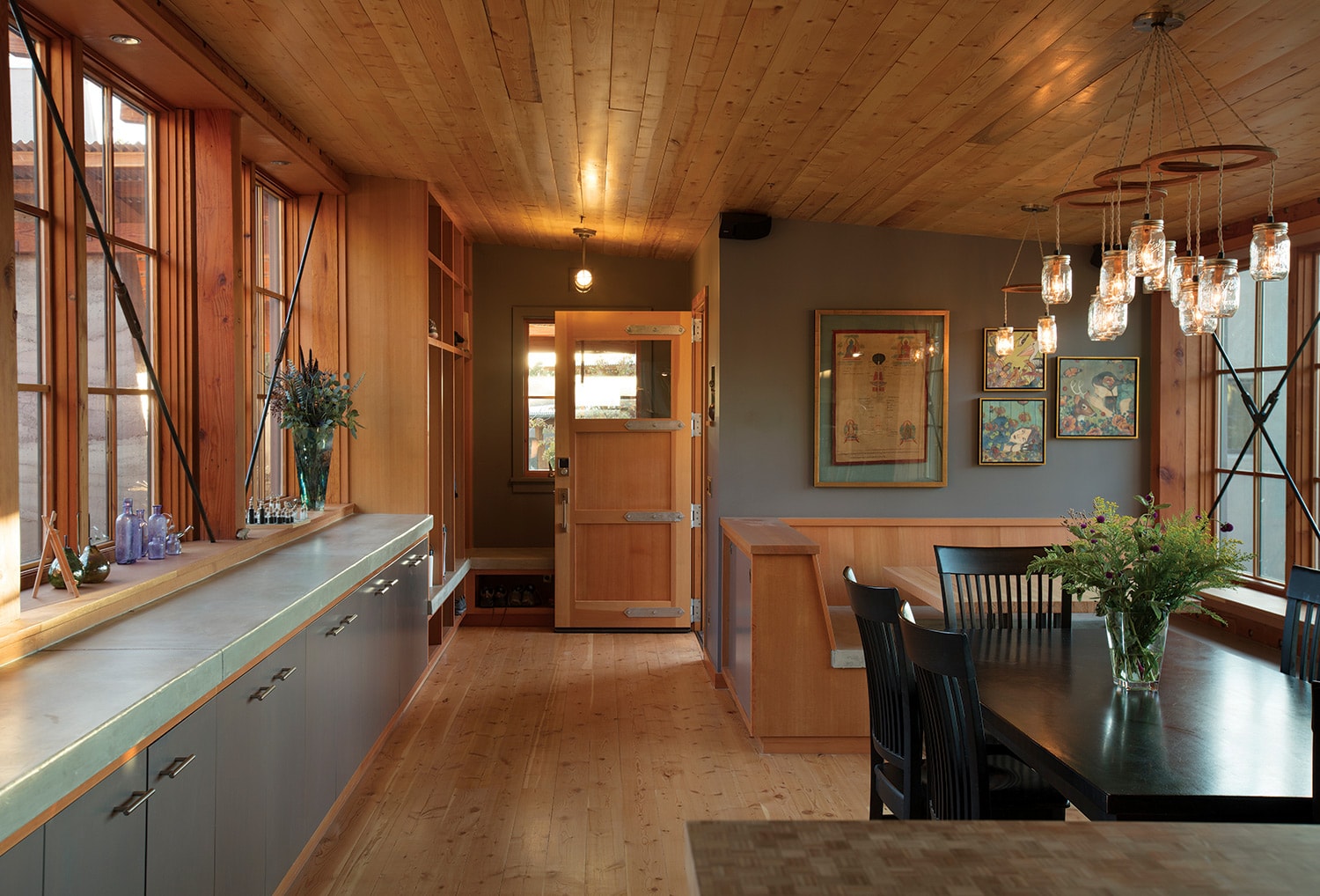 The light-filled dining room bridge has concrete sills and benches providing radiant heat. Structural steel tie-rods are visible across the windows.
The light-filled dining room bridge has concrete sills and benches providing radiant heat. Structural steel tie-rods are visible across the windows.
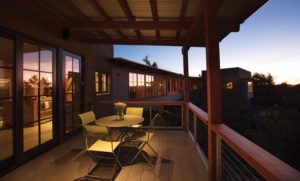
The covered porch off the living room looks across to the dining room bridge and the guest casita on the other side of the arroyo.
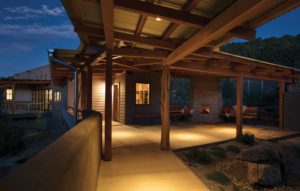
A peeled cedar column marks the entry and a rammed-earth kiva anchors the outdoor courtyard. Photos: Kate Russell
The Canyon Road Bridge House in Santa Fe, New Mexico, was subject to approval by the Historic Design Review Board and to regulations for stormwater management. Soil in Santa Fe is notorious for its erosive nature, so regulations forbid building on steep slopes. In order to take advantage of the spectacular views from the site, the firm built a bridge over a too-steep arroyo, providing a dramatic dining room with sweeping views. In the great room, a stunning rammed-earth wall, tinted with pigments, acts as a conduit for heat and smoke from the hearth that warms the whole house. Though eminently functional, the wall, with swirling veins of complementary hues, is also a work of beauty, proving once more that sustainability can also be aesthetically pleasing.






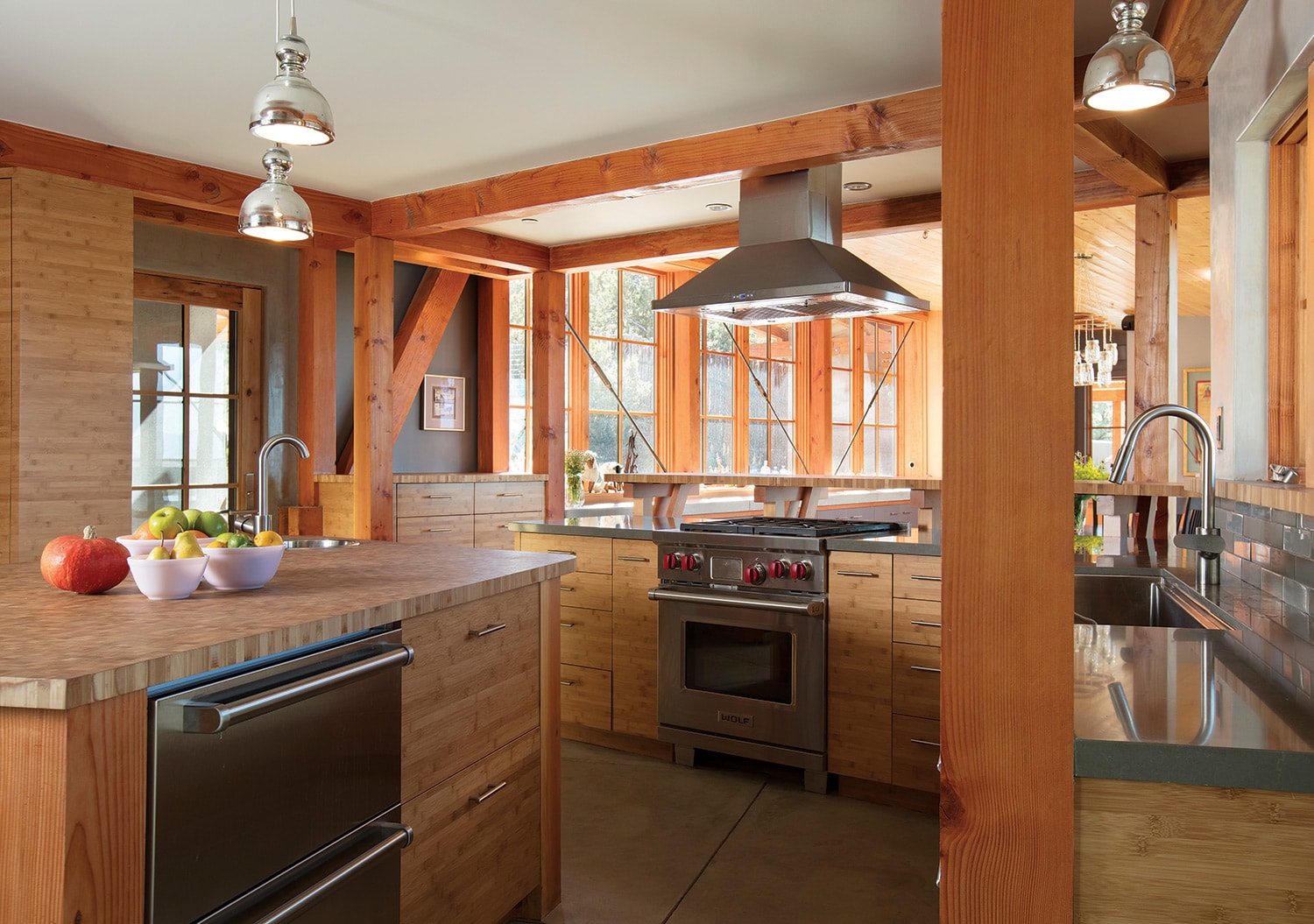 The timber-framed open kitchen features a Teragren bamboo butcher-block island countertop and custom bamboo cabinets. Photos: Kate Russell
The timber-framed open kitchen features a Teragren bamboo butcher-block island countertop and custom bamboo cabinets. Photos: Kate Russell
No Comments